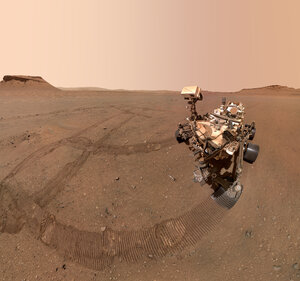Accept all cookies Accept only essential cookies See our Cookie Notice

About ESA
The European Space Agency (ESA) is Europe’s gateway to space. Its mission is to shape the development of Europe’s space capability and ensure that investment in space continues to deliver benefits to the citizens of Europe and the world.
Highlights
ESA - United space in Europe
This is ESA ESA facts Member States & Cooperating States Funding Director General Top management For Member State Delegations European vision European Space Policy ESA & EU Space Councils Responsibility & Sustainability Annual Report Calendar of meetings Corporate newsEstablishments & sites
ESA Headquarters ESA ESTEC ESA ESOC ESA ESRIN ESA EAC ESA ESAC Europe's Spaceport ESA ESEC ESA ECSAT Brussels Office Washington OfficeWorking with ESA
Business with ESA ESA Commercialisation Gateway Law at ESA Careers Cyber resilience at ESA IT at ESA Newsroom Partnerships Merchandising Licence Education Open Space Innovation Platform Integrity and Reporting Administrative Tribunal Health and SafetyMore about ESA
History ESA Historical Archives Exhibitions Publications Art & Culture ESA Merchandise Kids Diversity ESA Brand CentreLatest
Space in Member States
Find out more about space activities in our 23 Member States, and understand how ESA works together with their national agencies, institutions and organisations.
Science & Exploration
Exploring our Solar System and unlocking the secrets of the Universe
Go to topicAstronauts
Missions
Juice Euclid Webb Solar Orbiter BepiColombo Gaia ExoMars Cheops Exoplanet missions More missionsActivities
International Space Station Orion service module Gateway Concordia Caves & Pangaea BenefitsLatest
Space Safety
Protecting life and infrastructure on Earth and in orbit
Go to topicAsteroids
Asteroids and Planetary Defence Asteroid danger explained Flyeye telescope: asteroid detection Hera mission: asteroid deflection Near-Earth Object Coordination CentreSpace junk
About space debris Space debris by the numbers Space Environment Report In space refuelling, refurbishing and removingSafety from space
Clean Space ecodesign Zero Debris Technologies Space for Earth Supporting Sustainable DevelopmentLatest
Applications
Using space to benefit citizens and meet future challenges on Earth
Go to topicObserving the Earth
Observing the Earth Future EO Copernicus Meteorology Space for our climate Satellite missionsCommercialisation
ESA Commercialisation Gateway Open Space Innovation Platform Business Incubation ESA Space SolutionsLatest
Enabling & Support
Making space accessible and developing the technologies for the future
Go to topicBuilding missions
Space Engineering and Technology Test centre Laboratories Concurrent Design Facility Preparing for the future Shaping the Future Discovery and Preparation Advanced Concepts TeamSpace transportation
Space Transportation Ariane Vega Space Rider Future space transportation Boost! Europe's Spaceport Launches from Europe's Spaceport from 2012Latest

First sample depot on Mars
Thank you for liking
You have already liked this page, you can only like it once!
Europe’s next step towards exploring Mars hand-in-hand with NASA took place this week with a drop of a first sample tube, imaged above.
The Mars Perseverance Rover deposited the chalk-size core of igneous rock, taken from a region of Mars’ Jezero Crater in January 2022, that could be considered for a trip to Earth as part of the joint ESA-NASA Mars Sample Return (MSR) campaign.
The MSR campaign is made of several missions to return the first scientifically selected samples from the surface of another planet to Earth.
The plan is this: NASA’s Perseverance Rover, which has scouted 13 kilometres of the martian surface and acquired 17 rock and regolith samples and one atmospheric sample since its arrival in 2021, will deliver samples to the NASA Sample Retrieval lander (SRL). The SRL is quipped with an ESA 2.5 m Sample Transfer Arm and a rocket for launching the sample container into martian orbit. Once there, an ESA spacecraft will capture the container and bring it safely to Earth.
The backup plan is to create a depot of samples by early 2023, should the rover be unable to deliver the samples itself to lander in 2030. This reconfiguration of the campaign now includes two recovery helicopters that will be deployed from the lander to fetch the tubes.
The first of the 10 tubes that will make up the backup depot was deposited at a designated site called ‘Three Forks,” a carefully selected patch of the martian surface. Dropping the sample is a well orchestrated process whereby Perseverance retrieves the sample from its belly, inspects it with an internal camera, and finally drops it from roughly 90 centimeters onto the designated site. The process took the rover an hour.
Mission engineers not only needed to confirm the drop but also inspect the position of the tube using the camera on the rover’s robotic arm to ensure the tube landed on its side rather than its end and that it hadn’t rolled into the path of a rover wheel.
“Choosing the first depot on Mars makes this exploration campaign very real and tangible. Now we have a place to revisit with samples waiting for us there,” says David Parker, ESA’s director of Human and Robotic Exploration.
For all of the samples acquired so far, Perseverance always obtained two samples from each Mars rock – one sample to be left on the surface in the backup depot, and a second sample that is held within the belly of the rover to be directly transferred to NASA’s Sample Retrieval Lander.
“The first depot of Mars samples can be considered as a major risk mitigation step for the Mars Sample Return campaign,” points out David.
Watch a short animation featuring key moments of the Mars Sample Return campaign: from landing on Mars and securing the sample tubes to launching them off the surface and ferrying them back to Earth.
-
CREDIT
NASA/JPL-Caltech/MSSS -
LICENCE
ESA Standard Licence

First martian sample depot complete

Grip on Mars

Perseverance rover with sample tubes

Ready for collection – lightsabres for Mars















 Germany
Germany
 Austria
Austria
 Belgium
Belgium
 Denmark
Denmark
 Spain
Spain
 Estonia
Estonia
 Finland
Finland
 France
France
 Greece
Greece
 Hungary
Hungary
 Ireland
Ireland
 Italy
Italy
 Luxembourg
Luxembourg
 Norway
Norway
 The Netherlands
The Netherlands
 Poland
Poland
 Portugal
Portugal
 Czechia
Czechia
 Romania
Romania
 United Kingdom
United Kingdom
 Slovenia
Slovenia
 Sweden
Sweden
 Switzerland
Switzerland
























